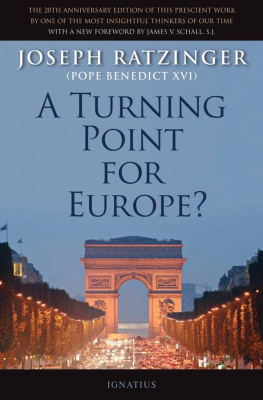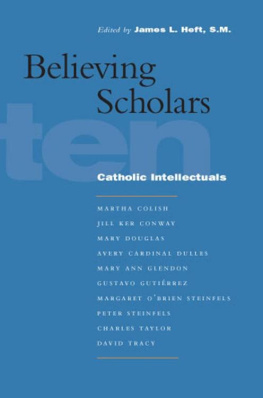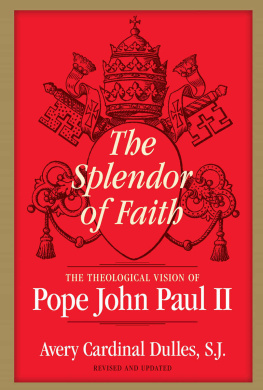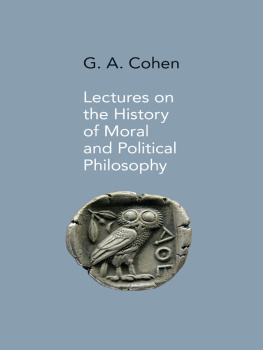CHURCH AND SOCIETY
CHURCH
and
SOCIETY

The McGinley Lectures, 19882007
AVERY CARDINAL DULLES

Copyright 2008 New York Province of the Society of Jesus
All rights reserved. No part of this publication may be reproduced, stored in a retrieval system, or transmitted in any form or by any meanselectronic, mechanical, photocopy, recording, or any otherexcept for brief quotations in printed reviews, without the prior permission of the publisher.
Library of Congress Cataloging-in-Publication Data
Dulles, Avery Robert, 1918
The church and society: the McGinley lectures, 19882007 / Avery Dulles.
1st ed.
p. cm.
Includes bibliographical references and index.
ISBN-13: 978-0-8232-2862-1 (cloth: alk. paper)
1. Catholic ChurchDoctrinesHistory20th century. 2. Catholic
ChurchDoctrinesHistory21st century. 3. Christian sociology
Catholic Church. 4. Church and social problemsCatholic Church. I. Title.
BX1751.3.D85 2008
282dc22 2008003277
Printed in the United States of America
10 09 08 5 4 3 2 1
First edition
CONTENTS
Foreword
Robert Peter Imbelli
1. University Theology as a Service to the Church
Fall 1988
2. Teaching Authority in the Church
Spring 1989
3. Catholicism and American Culture: The Uneasy Dialogue
Fall 1989
4. Faith and Experience: Strangers? Rivals? Partners?
Spring 1990
5. Newman, Conversion, and Ecumenism
Fall 1990
6. The Uses of Scripture in Theology
Spring 1991
7. John Paul II and the New Evangelization
Fall 1991
8. Historical Method and the Reality of Christ
Spring 1992
9. Religion and the Transformation of Politics
Fall 1992
10. The Church as Communion
Spring 1993
11. The Prophetic Humanism of John Paul II
Fall 1993
12. The Challenge of the Catechism
Fall 1994
13. Crucified for Our Sake: Love, Violence, and Sacrifice
Spring 1995
14. John Paul II and the Advent of the New Millennium
Fall 1995
15. Priesthood and Gender
Spring 1996
16. The Travails of Dialogue
Fall 1996
17. The Ignatian Tradition and Contemporary Theology
Spring 1997
18. Mary at the Dawn of the New Millennium
Fall 1997
19. Should the Church Repent?
Spring 1998
20. Human Rights: The United Nations and Papal Teaching
Fall 1998
21. Can Philosophy Be Christian? The New State of the Question
Spring 1999
22. Justification Today: A New Ecumenical Breakthrough
Fall 1999
23. The Papacy for a Global Church
Spring 2000
24. The Death Penalty: A Right-to-Life Issue?
Fall 2000
25. Religious Freedom: A Developing Doctrine
Spring 2001
26. Christ Among the Religions
Fall 2001
27. When to Forgive
Spring 2002
28. The Population of Hell
Fall 2002
29. True and False Reform in the Church
Spring 2003
30. John Paul II and the Mystery of the Human Person
Fall 2003
31. The Rebirth of Apologetics
Spring 2004
32. A Eucharistic Church: The Vision of John Paul II
Fall 2004
33. How Real Is the Real Presence?
Spring 2005
34. Benedict XVI: Interpreter of Vatican II
Fall 2005
35. The Mission of the Laity
Spring 2006
36. The Ignatian Charism at the Dawn of the Twenty-First Century
Fall 2006
37. Evolution, Atheism, and Religious Belief
Spring 2007
38. Who Can Be Saved?
Fall 2007
FOREWORD
Avery Dulles, Vir Ecclesiasticus
ROBERT PETER IMBELLI
One of the most heartfelt accolades the early Fathers could bestow on a theologian was to praise him as a vir ecclesiasticus: an ecclesial man. I can think of few theologians of our day who so merit the title as Cardinal Avery Dulles. He merits it not merely because of his rank as a prince of the Church, or even because his primary theological focus has been ecclesiology, the theology of the Church. Rather, his whole theological and priestly existence has been in service of the Church, dwelling in its midst, nourished by its tradition, seeking to extend that life-giving tradition to meet the questions and challenges of our time. The Introit for the Mass of a Doctor of the Church surely summarizes his lifes commitment: to speak and write in the midst of the ChurchIn medio ecclesiae aperuit os ejus.
THE CHURCH IN LIGHT OF VATICAN II
However, the earthly Church is not some Platonic idea, floating free of history. Like its incarnate Lord, Christs Church is immersed in history as it pursues its pilgrim journey to the fullness of the Kingdom, the heavenly Jerusalem, the City of Peace. Every theologian inhabits a specific historical context, speaking and writing a distinctive language within a given social and cultural setting.
For the contemporary Catholic theologian a defining characteristic of the context in which he or she labors is the ongoing reception of the Second Vatican Council. In the introduction to his book The Resilient Church (1977), Dulles wrote:
There are some events in church history so decisive that they set the agenda for an entire historical era. For Catholic ecclesiology the Second Vatican Council seems to have been such an event. More than a decade after the Council the Catholic ecclesiologist has no choice except to frame his questions in the light of what the Council initiated.
What he wrote in 1977 he doubtless would repeat in 2007. The council continues to set the agenda for our day into the foreseeable future. Few have contributed so magisterially to the elucidation and appropriation of the councils ecclesial vision as has Avery Dulles.
One acknowledges his unparalleled familiarity with the entire range of the councils documents. One admires his knowledge of the prehistory of the council: from Vatican I through neo-Scholasticism to the nouvelle thologie and the pioneering encyclicals of Pius XII. One appreciates his refusal to countenance a facile separation of the councils supposed spirit from the manifest teaching of its texts.
Dulles holds together the creative tension that characterized the labors of the council itself: the dynamic of ressourcement and aggiornamento. Ressourcement was the return to the sources made possible by the flowering of scriptural and patristic scholarship in the decades prior to Vatican II. It uncovered the wellsprings of the Catholic Tradition, much deeper and more nourishing than the relatively constricted forms of post-Tridentine Catholicism. Aggiornamento was the recognition that one could not merely remain in the fifth century with Augustine or even the first century with Paul but had to bring their life-giving words into the present in a way that is intelligible and transforming for men and women of our day.
In his book The Reshaping of Catholicism (1988), Dulles has a significant chapter entitled Vatican II and the Recovery of Tradition. He articulates one of the councils key accomplishments thus:
Getting away from an excessively rigid, conceptual, and authoritarian view of tradition, the Council emphasizes that tradition arises through a real, living self-communication of God in grace and revelation, that it is rooted in the life of the community of faith, and that it adapts itself and develops in changing historical situations.
This rich, multidimensional sense of tradition permeates Dulless work. It owes much to such thinkers as Newman, Blondel, and Polanyi. It stresses that tradition embraces both content and process; that it is both conservative and innovative.
Next page
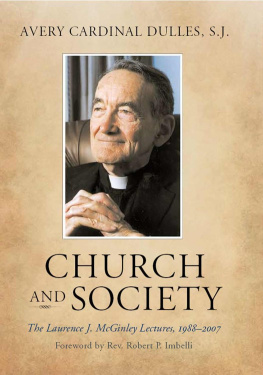
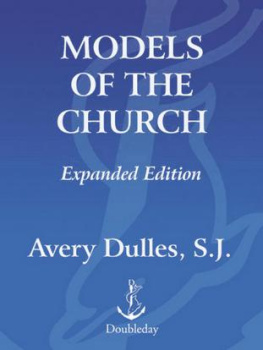
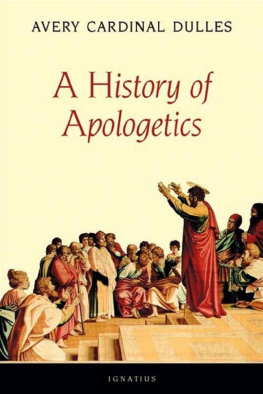

![Blessed John Henry Newman - Blessed John Henry Newman Collection [26 Books]](/uploads/posts/book/371011/thumbs/blessed-john-henry-newman-blessed-john-henry.jpg)
